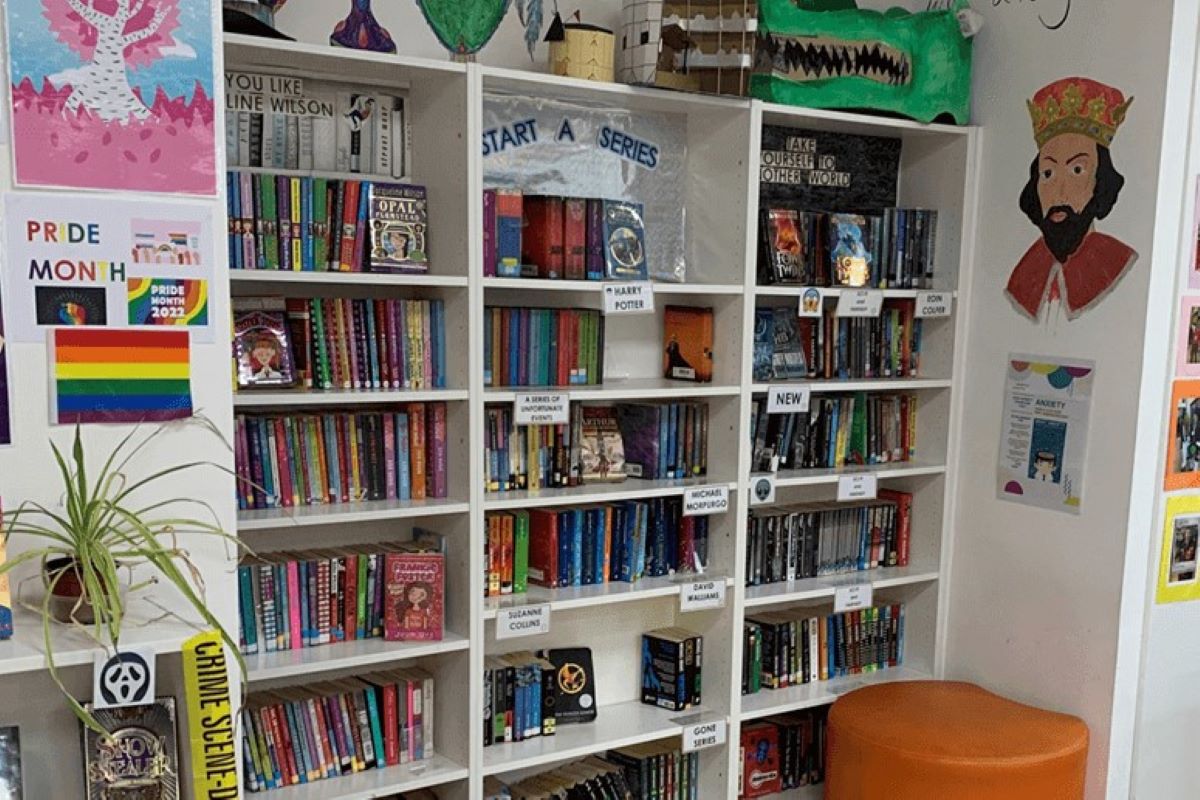A whole school literacy approach at Blessed Thomas Holford Catholic College
Introduction
The UK Government’s March 2022 White Paper “Opportunity for all: Strong schools with great teachers for your child” set high targets for both KS2 and GCSE exams: at KS2, the ‘Levelling Up’ goal is for 90% of pupils to meet the expected standard in Reading, Writing and Maths, and at GCSE a level 5 (up from 4) by 2030. This is in the context, for many schools, of declining reading ages amongst their Year 7 cohort, and the Covid legacy: this year’s SATs tests show that around a quarter of all Y7s have a reading age below 11.
About the school
Blessed Thomas Holford Catholic College (BTHCC) is an over-subscribed 11-18 faith school in Greater Manchester. Although located in an affluent area, the catchment is diverse, attracting students from a range of backgrounds. The school has high ambitions for all, and achieves excellent academic results, while developing students’ spiritual and moral values. Although the school describes itself as forward looking, their investment in technology is matched by the importance placed on books and reading. “Reading is at the heart of everything we do, and is central to the learning the children acquire at the school,” explains Leanne Sigsworth, Head of English, adding that this ‘culture of reading’ is led by the Head, who has set reading as one of five whole-school priorities. “We’re lucky that our Head is passionate about reading.”
School stats:
- Number on roll: 1,555
- Percentage of pupils with an EHCP: 2.6%
- Percentage with SEN support: 10.9%
- Percentage who are EAL: 6.3%
- Percentage eligible for free school meals: 12.3%
The challenge
- How to boost the amount of reading, and reading attainment levels, amongst boys, focusing specifically on those who are pupil premium?
- How to raise reading ages amongst the current Y10s caused by the Covid legacy?
- How to ensure parity in promoting reading for pleasure and purpose across all student groups, years and in all subjects?
BTHCC carries out a wide range of whole-school reading and literacy initiatives, but in this conversation they chose to focus on two areas that have been transformational for both attitudes and outcomes in reading.
Action taken
The school library: BTHCC didn’t always have a library, explains Leanne, but the school’s decision five years ago to invest in one has been a gamechanger. The subsequent appointment of Amanda Rowe, the school’s librarian, has seen borrowing figures and footfall soar. Amanda’s passion for inspiring a love of reading amongst the students is obvious when she starts describing the range of initiatives and changes she’s made. The first step was to make the library a welcoming and comfortable space. “It’s just such a nice space. It’s gone from strength to strength. I’ve got a queue of them waiting to come in when I open the doors at 8am.” Students can curl up with a book in comfy sofas and armchairs at the front of the library, or huddle round a pod to work in groups.

Amanda is also responsible for running the reading interventions from the newly created ‘reading hubs’ in the library, another success story: gains in reading ages amongst PP and SEND students are outstripping the national trend. “Only yesterday one of our students said this is the highlight of their week. We choose really good books for them, we have fun, they love it. It’s the best thing we’ve done,” says Amanda.
Capitalising on students’ preference for using their phones has paid off, too: an online library management system called Accessit allows pupils to browse the library virtually, reserve books, and post book reviews. A reward system provides positive reinforcement: students earn a ‘proud point’ token and stamp for each book they read and review. Proud tokens go into tubes at the front of the library as a visual display of the number of books read, while four stamps can be traded in for a hot chocolate and cookie in the sixth form centre, or accrued towards a bigger reward.
Amanda also started the school newspaper last year, a virtual publication written by students featuring stories about staff, book reviews, and news. “That’s been brilliant, we’ve got so many of them wanting to join as reporters”.

Investment in the library, and finding the right librarian, has been central to BTHCC’s success in putting reading at the heart of their school.
Embedding reading across the curriculum: Antonia Butterworth, Assistant Head in charge of curriculum implementation, describes the school as ‘lucky’ in having HoDs who ‘recognise the importance of reading’, and who understand that if students can’t read, they can’t access the curriculum. It’s clear this ‘luck’ is thanks to the school’s leadership team, who have underpinned their commitment to reading with both training and by freeing up teachers’ time. Alongside the training and commitment of staff, two initiatives have been instrumental in underpinning BTHCC’s whole school reading approach.
1) Providing two templates to scaffold and support the use of texts in all subjects.
The first, Read with Power, breaks down reading into four ‘steps’: Predict, Clarify, Question and Summarise. The second scaffolds the text with structured prompts and provides a glossary of key vocabulary. Each department modifies and adapts the templates for their needs. Striking the balance between providing structured support, and ‘ownership’ is crucial, ensuring the initiative is embedded and sustainable. “There may be some subjects who’ll use it slightly differently and that’s absolutely fine. … it’s about making it tailored and needed and wanted by each department,” explains Leanne.
2) Creating curriculum maps which are linked to texts, and using texts as an integral part of lessons. Teachers recognise that reading allows students to explore beyond the curriculum, and teachers can see the impact on students’ curiosity, engagement and enjoyment. Ellis Griffiths, Head of Science, describes the benefits for pupils and for teachers: “We can really explore that knowledge and hinterland that supports the core knowledge we’re trying to teach them, and we can share more about the science that excites us as teachers.” Heads of Department have each compiled a reading list for their subject which is published on the school website, based on the books they love, or their students have recommended. Teachers ‘model’ their own love of reading: lanyards feature the covers of their favourite book, they talk about books in lessons, and Amanda makes sure that these books are available at the front of the library.
Next steps
“It’s never a finished article”, says Leanne. Initiatives are constantly evolving and developing in line with the changing needs of different cohorts, groups of students and, of course, to reflect the accelerated learning gains as students benefit from each initiative.
With PP boys’ reading for pleasure identified as a priority, Amanda has reached out to their local rugby club, and videoed one of the players talking about books. They’re also inviting male staff in to do a commentary on the 2023 World Cup.
To ensure parity of access to library resources across the school, the sixth form facilities are being upgraded, to embed the same ‘culture of reading’ for older students.
Top tips
- Goodwill and an intrinsic belief that reading is important isn’t enough: a whole school literacy approach needs to be led from the top down. It requires time, budget and training to make it happen.
- Start with your library, advises Antonia, and even more importantly, with the right librarian. “Someone who is warm and welcoming and creates that dedicated space for reading.” Appointing a passionate advocate of reading is one of the best things a school can do.
- Initiatives must be evidence informed, based on a forensic analysis of data and on student voice. Antonia attributes the accelerated progress in reading seen by their SEND and PP students to a consistent approach across all departments, underpinned by their highly effective reading interventions.
- Provide structured templates to support the use of texts in other departments, but, crucially, allow colleagues to modify and adapt these so that they fit the needs of their subject.

Ultimately, “Everyone goes into teaching because they want children to be naturally inquisitive about their subject and interested in it, and reading provides that opportunity for that curiosity around the subject matter that ordinarily we can’t address through learning points.”
Who took part?
This case study was based on a group discussion with five members of staff at BTHCC.
- Antonia Butterworth: Assistant Headteacher and former Head of English, in charge of curriculum implementation and CPD.
- Leanne Sigsworth: Head of English
- Christine Wood: English teacher & Head of Literacy
- Amanda Rowe, Librarian
- Ellis Griffiths, Head of Science
Further reading
UKLA guidance on becoming a ‘reading teacher’: Reading teachers are teachers who read and readers who teach.
Interested in resources designed to assist students in improving reading ages? Check out the link below.
Melissa Mackinlay is a senior education market research consultant with extensive experience of the home and international schools markets in both primary and secondary phases.
As an independent consultant, she works with a range of clients on gathering primary and secondary data through a range of research methodologies, and providing commercially-driven market insights and recommendations.

